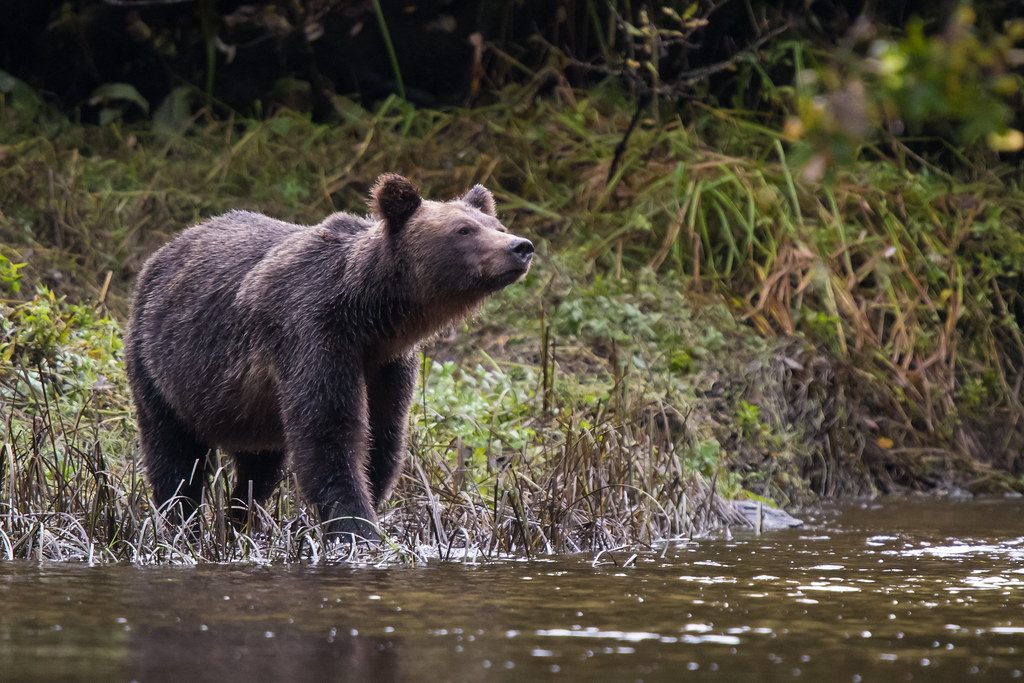
Tim writes: I managed to catch this female Grizzly Bear with a little gentle sunlight on her head and shoulders. Sunlight is in short supply in the deep valleys of British Columbia as it takes ages for the sun to rise above the mountains. Add to that the fact that Grizzly Bears are most active in mornings and evenings so photographing one in the sun can be difficult. This mother had twin cubs of the year in tow, but they were lurking in a nearby willow thicket when this photo-opportunity arose. This bear is sniffing the air. They do that a lot as it is their dominant sense. The portion of their brain associated with the sense of smell is five times larger than that of humans. Your average dog has a sense of smell 100 to 300 times greater than a human but a bear’s sense is more than 2000 times greater.
Grizzly Bears (Ursus arctos horribilis) are a subspecies of the Brown Bear that occurs across Europe, Asia and North America. It is the subspecies that occurs over most of its North American range (the three other extant subspecies in N America are Kodiak, Mexican and Peninsular Alaskan). The scientific name Ursus arctos translates as “bear” in Latin and Greek. The Arctic was named after bear because the ancient Greeks knew that wind from the north (the direction of the Great Bear constellation) was cold, so they deduced a cold land (the Arctic) occurred to the north.
[registration_form]
I am more delighted than I can say to know that arctic = bear and the north wind and polar region are named for bears via the stars…